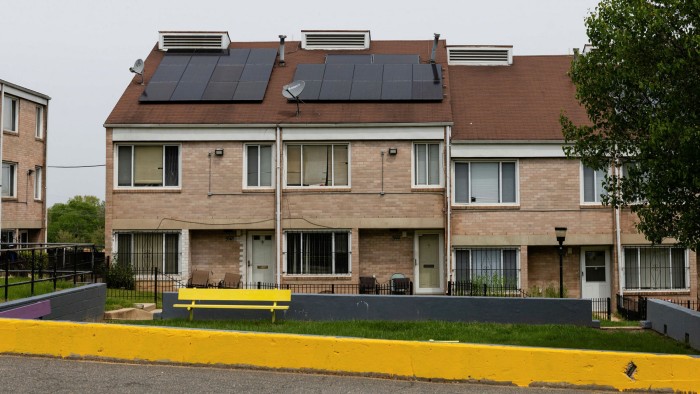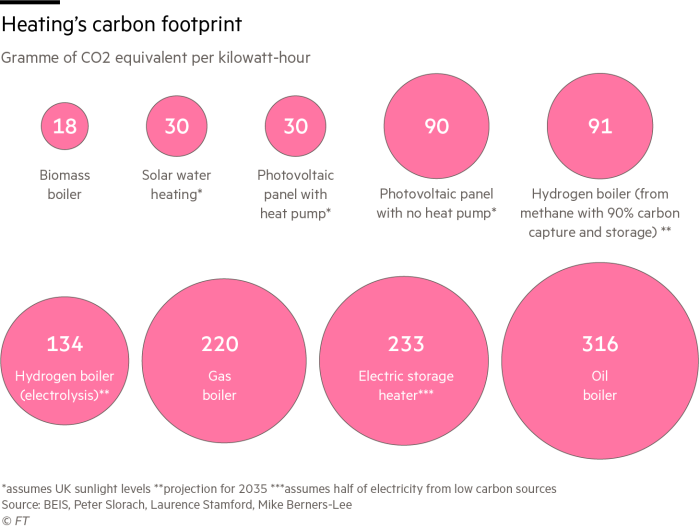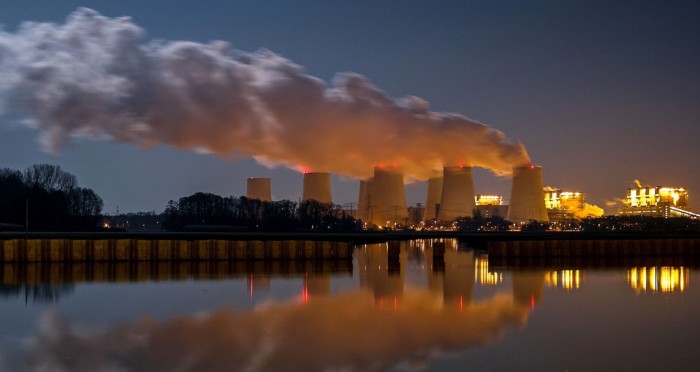Carbon counter: greener heating is warming up

Roula Khalaf, Editor of the FT, selects her favourite stories in this weekly newsletter.
Heating is one of the biggest and toughest of carbon problems. It accounts for half of all energy consumption overall. Progress in reducing that is slow. Most heating equipment sold still uses fossil fuels. But the options to cut carbon footprints at home are expanding.
Installing photovoltaic panels is an increasingly cost-effective source of low carbon electricity, even in not-very-sunny countries such as Britain. Including carbon emitted during manufacturing, the carbon footprint is about 90g CO2e per kilowatt-hour. In a brighter country with a carbon-intensive electricity supply such as Australia, it might be as little as 5 per cent that of the grid.
Using sunlight to directly heat water with the help of solar panels is even more efficient. Burning wood chips in biomass boilers is credited with a similarly minimal carbon footprint, though this is subject to debate.

Heat pumps are a particularly useful option. They multiply the heat per unit of electricity by a factor of up to four. Moving coolant through pipes, using a compressor to change the pressure, absorbs heat from the outside air or ground, later releasing it inside the house.
Admittedly, these are pricey and only deliver low grade heat. A heat pump might need to be combined with a boiler to provide extra heat on the coldest days. Moreover, big water tanks and underfloor heating — or more radiators — will be needed. That will be easiest for well-insulated, new-built homes, making it possible for housebuilders such as the UK’s Barratt Developments to promise “net zero” properties from 2030. Older, draughty properties need refurbishment. Some ‘net zero’ retrofits go as far as to put an airtight envelope over the top of the existing building.
Switching to boilers that burn hydrogen might be less disruptive if the gas network is repurposed. Early trials are under way. The carbon footprint would depend on whether the hydrogen was made by splitting water into hydrogen and oxygen — which requires a lot of electricity — or by heating methane with steam. That would require large-scale carbon capture and storage — the viability of which has not yet been proven.
Both electric heat pumps and hydrogen boilers have fierce advocates. But neither option makes sense for all buildings — and some city blocks will be best served by district heating which supplies warmth from a central source. One size will not fit all. But a focus on top-notch insulation and directing heat to where it is needed is a good first step.
Lex is interested in hearing more from readers. Have you attempted to change your home’s heating equipment or improve insulation? Please let us know in the comments below
Climate Capital

Where climate change meets business, markets and politics. Explore the FT’s coverage here

Comments